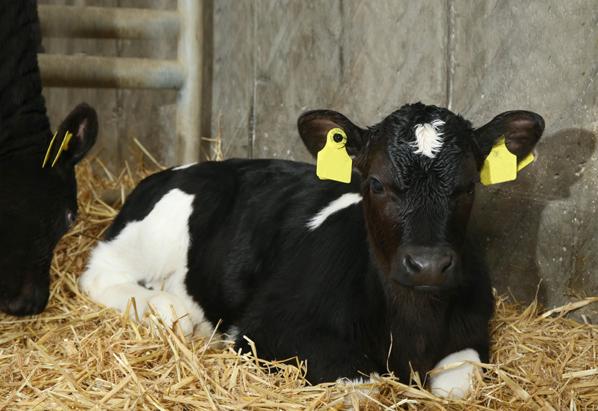
5 minute read
BIRTH – WEEK 1
ANIMAL NUTRITION
Colostrum is vital to calf wellbeing as it provides both a source high in energy as well as essential immunoglobulins. After the first 24 hours, cow's transition milk should be fed for 2 - 5 days to fulfil the calf's energy demands and provide further immune support locally in the calf's digestive system.
Advertisement
Good quality colostrum is essential to ensure an easier life for the calf as well as the farmer. Just follow the 1-2-3 rule:
11st milk the cow produces after calving
2Feed within 2 hours after birth
3
Feed at least 3 litres
Colostrum is crucial
At birth, the calf's immune system is unprepared for the challenges it is likely to face. Colostrum is crucial in providing the calf not only with vital nutrients, but also with the necessary immunoglobulins to protect the calf against common infections during the first months of life.
The 3 Q’s of colostrum feeding:
Quantity
● At least 3 litres is given in first feed ● Second feed within first 8 hours
Quality To test for quality use a colostrometer or refractrometer
Why? Not all colostrums are the same. Test the colostrum and only use or freeze the highest quality. Do not take any colostrum in from another farm.
Firstly, you don’t know how good it is and secondly, you are potentially bringing in diseases. Only use colostrum from the first milking as the calf’s first feed, as it will be far too diluted by the next milking.
Measuring colostrum quality:
Using the colostrometer:
● Put fresh warm colostrum into a container, fill the container to the rim. ● Ensure there is no foam floating on top, as this will distort the reading. ● Gently lower the colostrometer in the full container. ● Take a reading from the rim of the container looking to the traffic light diagram on the neck of the floating colostrometer. ● If it reads green, it is adequate colostrum to feed to newborn calves. ● If it reads orange or red the colostrum is of inadequate quality to feed to newborn calves. ● Carefully take the colostrometer out of the container and clean. Care should be taken as the colostrometer is fragile.
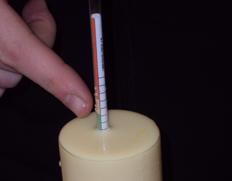
Quickly
Feed in the first 2 hours of life. Why? The calf’s ability to absorb the necessary immunoglobulins significantly reduces after 12 hours of life.
DID YOU KNOW?
and stops completely by 20 - 24 hours of life. If thawing frozen colostrum, thaw at a max temperature of
50ºC (Boiling water will denature proteins and reduce effectiveness).
FEEDING GUIDELINES
● Transition milk should be fed from days 2 - 5, thereafter calf milk replacer should be introduced into the diet. ● Introduce concentrates from 3 days of age to kick start rumen development. GAIN Startacalf should be offered ad-lib until consuming ≥250g/head/day. ● Fresh water and clean long roughage must be available to calves at all times.
Milk Only Milk & Concentrate Milk & Hay
Milk only or milk and hay diets will not achieve sufficient rumen development. It takes starch derived from concentrates to develop the rumen from an early age.
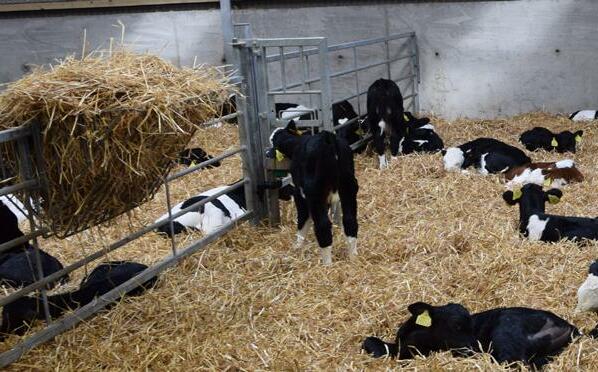
ANIMAL HEALTH
Pre-calver mineral Providing cows with a protected/organic mineral source over the dry period (GAIN Pre-calver Gold, 120g/day for 6 weeks), will increase immunoglobulin content of colostrum, increasing passive immunity.
Calving box hygiene Ensure an adequate number of calving boxes, at least 1 per 15 cows; clean out and replace bedding often to reduce cow/calf infections.
Rota/Coronavirus Vaccinate pregnant cows and heifers 3 to 12 weeks before calving to increase colostrum quality and provide additional protection against calf scour.
Salmonella Vaccinating cows and breeding heifers will not only protect them from salmonella, it will also boost a calf's immunity against these bacteria through improved colostrum quality. Johne's Disease Young calves are the most susceptible to pick up this disease from their environment and through contaminated colostrum and milk. See AHI guidelines on controlling Johne's disease in your herd. www.animalhealthireland.ie
Pneumonia Calves can be vaccinated against several causes of pneumonia from a young age. Intranasal vaccines are available for calves of 1 week old.
Coccidiosis If you suspect a problem with coccidiosis then consult your vet to discuss an appropriate plan. Maintaining good hygiene standards of calf pens and feeding equipment will reduce the exposure of calves to coccidia. Disinfection of calf housing with an amine based compound such as Kenocox is needed to eliminate coccidian from the environment.
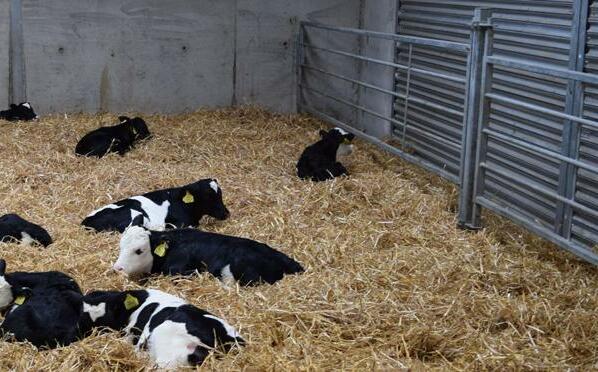
ANIMAL HUSBANDRY
Calf housing should support good health and welfare, which ultimately benefits the farm business financially. Key elements to assess in your calf housing are outlined below.
● Creating a draught-free environment - Draughts hitting calves causes them to lose heat energy. A comfortable draught-free climate must be provided in the first week of life with ambient temperatures >15°C. ● Creating and maintaining a dry bed - Calves spend 80% of their time lying down so the type and depth of bedding used is important. ● Adequate manure disposal - The flooring/bedding needs to facilitate easy cleaning and removal of waste. Drainage systems of calf houses is key. Waste should not drain away from one pen through another as this can spread disease. ● Regular house and personnel disinfection - The shed should be thoroughly cleaned and disinfected with a broad-spectrum disinfectant before calves arrive. While in use, pens should be frequently disinfected to prevent the build-up of disease organisms. Ideally, calves should be bedded every day and pens cleaned out weekly. ● Adequate feeding and drinking space - The correct feeder and drinking space must be provided to encourage feed and water intake. For bucket feeding, calves require 350mm of feed face each. ● Sufficient air space - Air space is critical. There should be a minimum of 7m3/calf total house cubic air capacity provided per calf at birth, increasing to 10m3 by two months of age. The greater the number of calves in a single air space, the greater the risk to health. ● Do not over stock calf pens. The space required for calves in group pens will vary according to weight. Grouped calves require 1.8m2 of pen area and a total floor space of 2.3 to 2.5m2/calf floor area.
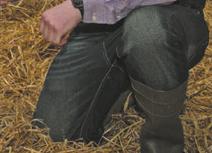
Dry looking beds may be wet. To check if beds are adequately bedded and dry, kneel with all your weight on the bedded floor. If the knees of your trousers are wet, the house is not bedded sufficiently.




